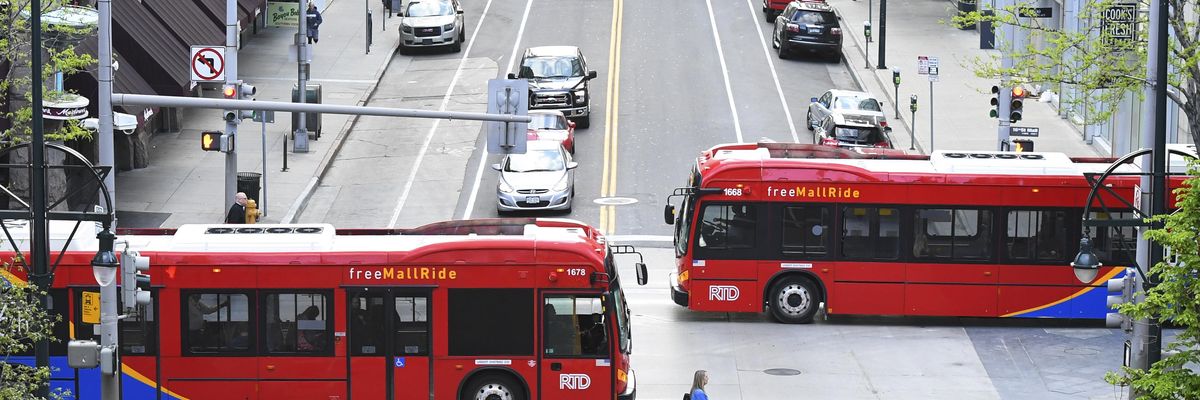Since the passage of the Inflation Reduction Act last year, the Biden administration has been making a broad push for a future centered around electric vehicles—but a first-of-its-kind study released Tuesday warned that the EV transition —but a first-of-its-kind study released Tuesday warned that the transition must go hand-in-hand with major investments in mass transit and other steps to reduce U.S. dependence on cars altogether.
Researchers at the Climate and Community Project and University of California, Davis noted in the study, titled Achieving Zero Emissions with More Mobility and Less Mining, that the transition to electric vehicles (EVs) that the Biden administration is envisioning would require the country to mine three times the amount of lithium domestically than it currently does—all from the single U.S. mine in operation.
Global demand for lithium, which powers electric batteries, is expected to rise over 40 times by 2040, if the International Energy Agency's (IEA) "sustainable development scenario" is met, with the world reaching roughly two billion EVs on the road by 2050 in order to reach net-zero greenhouse gas emissions.
"The report brings into light possibilities for a future without fossil fuels that minimizes mineral extraction and new harms to communities in lithium-rich areas."
"Replacing all of the [internal combustion engine] vehicles on the road with EVs on a 1:1 basis is infeasible, particularly on the urgent timeline needed for climate mitigation," reads the report. "This would require significant increases in extraction of minerals like lithium and cobalt for EV battery packs and would also require an enormous amount of electricity."
The extraction of lithium can have "oftentimes devastating consequences," reads the report, including consumption of massive amounts of water—often in areas already facing climate crisis-fueled drought like Nevada, where 50 new lithium mine projects are being developed—water contamination; violations of Free, Prior, and Informed Consent standards for Indigenous people; and the destruction of landscapes that serve as carbon sinks.
While "preserving the status quo" and maintaining the number of cars on the road may be "politically easier," lead study author Thea Riofrancos toldThe Guardian, "it's not the fastest way to get people out of cars or the fairest way to decarbonize."
"We can either electrify the status quo to reach zero emissions, or the energy transition can be used as an opportunity to rethink our cities and the transportation sector so that it's more environmentally and socially just, both in the U.S. and globally," she added.
The researchers created models to determine the amount of lithium the U.S. would need to extract in order to achieve zero emissions for personal vehicles, comparing scenarios with a number of variables including car ownership rates, the size of EVs and the batteries they use, city density, public transit use, and battery recycling rates.
In the best-case scenario, the U.S. would have to extract 40,000 tons of lithium to power EVs in 2050—with demand 92% lower than under the car ownership status quo. In this scenario, battery recycling would be widespread, EVs would use small batteries, and the vehicle ownership rate would be sharply reduced.
"But results show that even if Americans can't wean themselves off cars with big lithium batteries, increasing the density of metropolitan areas and investing in mass transit would cut cumulative demand for lithium between 18% and 66%," reported The Guardian. "Limiting the size of EV batteries alone can cut lithium demand by up to 42% by 2050."
Keith Stewart, a climate and energy campaigner with Greenpeace Canada, said the study contained "fascinating and important research on how policies like investing in mass transit, walkable cities, and battery recycling, while reducing size of EVs, can cut the amount of lithium for fossil-free transportation."
"The report brings into light possibilities for a future without fossil fuels that minimizes mineral extraction and new harms to communities in lithium-rich areas," Pía Marchegiani, policy director at the Environment and Natural Resources Foundation in Argentina, told The Guardian.
The report was released a month after U.S. Rep. Cori Bush (D-Mo.) unveiled legislation to invest in bus and light rail transportation to cut down on emissions from transportation.
"The findings of this report," Payal Sampat, mining program director at Earthworks, told The Guardian, "must jumpstart policies to invest in robust, accessible public transit systems that advance equity, reduce pollution, and get people where they need to go."

